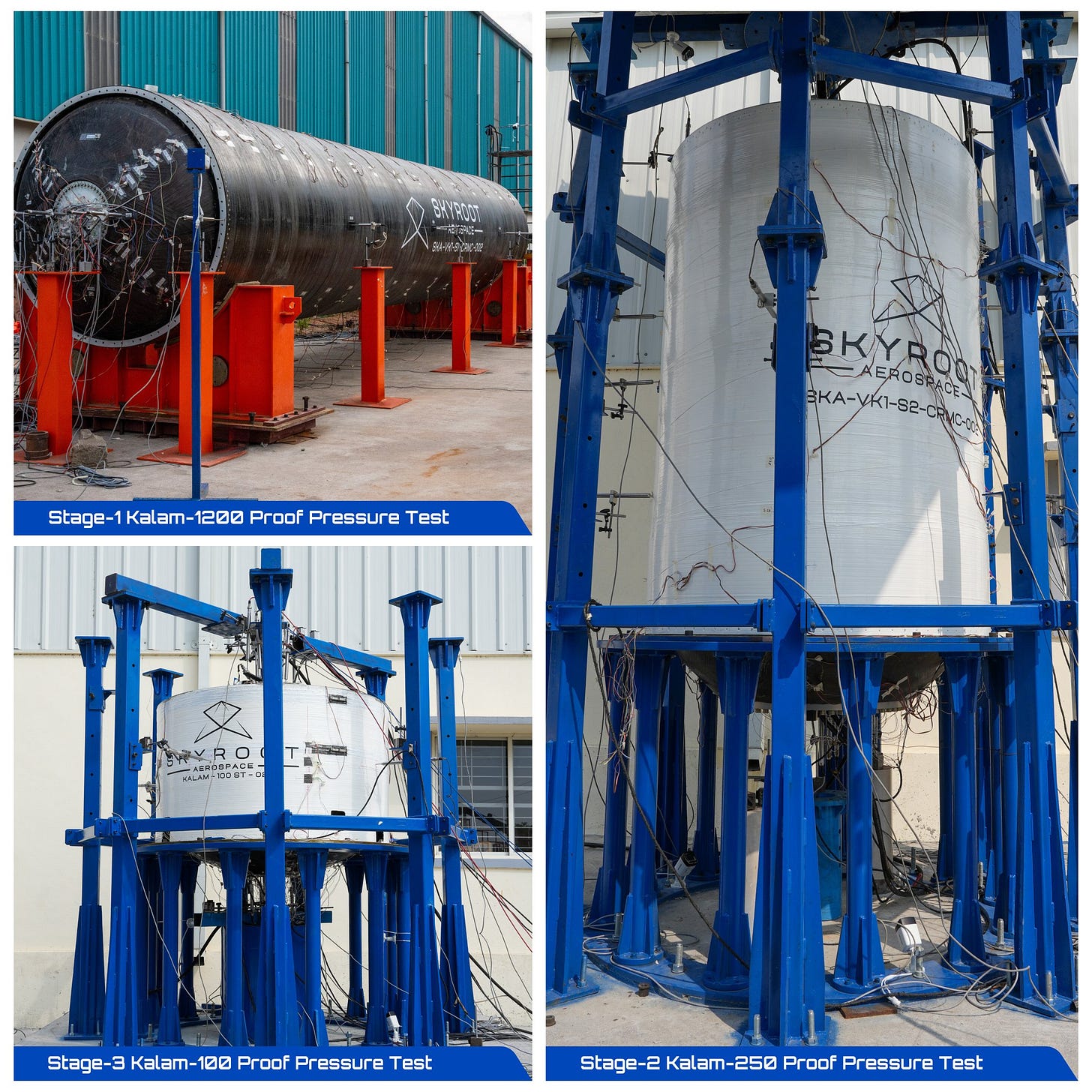Pradeep's Space Newsletter #62
XDLINX Labs tests the world’s first miniaturized E-band payload
XDLINX Labs built the world’s first space-grade miniaturized two-way E-band payload and flew it on a drone. This was a test of real-time data reception and signal strength. The payload will next be launched to low-earth orbit on board Almagest Space Corporation’s IOM Elevation-1 satellite.
The satellite is also built on XDSAT-NS platform built by XDLINX Labs. Flight expected in H2, 2024.
LinkedIn post has video of the demo| Blog post on the use of E-band
Azista BST Aerospace is a cubesat integrator for the iLAuNCH Trailblazer project
Australia National University and Boswell Technologies built and developed a Bogong Thruster that is based on a Bogong Thruster launched in 2023. They call this Bogong 2.0. This is meant as a Guidance, Navigation, and Control (GNC) system for CubeSat.
The fuel used is naphthalene balls which change states directly from solid to gas. Azista BST Aerospace will provide the CubeSat on which the Bogong Thruster will be integrated.
May 2024 Monthly Summary of DoS
ISRO tested the 3D-printed PS4 engine on 9 May 2024 for 665 seconds.
After an earlier failure of the test of Pre-Burner Ignition Test Article (PITA), ISRO did two successful tests of the PITA on 2 and 21 May 2024. PITA is a scaled-down version of the semi-cryogenic engine which tests the ignition sequence for 2.5 seconds. It is an important milestone for the operationalization of the semi-cryogenic engine.
There are many more interesting pieces including ThrustWork Dynamics, a Pune-based rocket engine company, which signed an MoU with IN-SPACe to access ISRO facility for testing its rocket engine, ANYA.
Access the summary and comments on the ISRO Sub-Reddit.
Jatan’s articles in Moon Monday
Issue 183 of Moon Monday has a nice summary of the upcoming Chandrayaan and Gaganayaan missions. If you can read between the lines you can see how these two missions will benefit from each other and eventually end with human exploration of the Moon.
Issue 184 of Moon Monday has an article titled Coordinating Lunar Traffic. This talks of coordination between the US, India, Japan, and Korea to adjust the orbits of their lunar orbiters - LRO, Chandrayaan 2 Orbiter, SLIM, and KPLO.
Articles on Indian Centers of Significance in Space
The Print’s Science editor, Sandhya Ramesh has written two wonderful articles of centers of significance in the space sector in India. Her current article is based on a visit to the Physical Research Laboratory (PRL), Ahmedabad. PRL is called the cradle of space science in India.
This article has some wonderful pictures of Vikram Sarabhai’s desk in PRL and the machines that study samples received by PRL from space. These samples include lunar samples from the US Apollo missions and the Soviet Union’s Luna mission, and asteroid samples from Itokawa and Ryugu from the Japanese Hayabusa mission. I think that the lack of lunar samples from the Chinese Chang’e missions may be a huge loss for the scientists in this lab.
Her earlier article was on the Mount Abu Observatory which I missed covering in this newsletter.
Skyroot Aerospace Proof Pressure Tests its Three Solid Stages for Vikram 1
Skyroot Aerospace announced that it has completed the Proof Pressure Test for three solid stages of Vikram 1 - Kalam-1200 used for its first stage, Kalam-250 used for its second stage, and Kalam-100 used for its third stage.

Pawan Chandana, co-founder of Skyroot Aerospace says more tests are lined up for the next three months.
Dhruva Space receives authorization for Ground Segment
Dhruva Space received authorization from India’s space regulator, the Indian National Space Promotion and Authorization Center (IN-SPACe) for Ground Station as a Service (GSaaS). I am not sure if this also means that they have the TRAI license required for satellite communications.
GSaaS allows Dhruva Space to offer one more service to its customers. It allows its customers to transfer data with the satellites and control the satellites.
Dhruva Space has designed and developed six ground stations Very High Frequency (VHF) and Ultra High Frequency (UHF) bands and two ground stations in S and/or X bands.
This is important in the background of its agreement with French firm Kinesis to provide IoT connectivity for India. The payload will be carried on its P30 satellite platform. This was tested in the LEAP-TD mission, on 1 January 2024 on the PSLV-C55 mission’s POEM-3. Dhruva Space had earlier tested low bit-rate communication with their Thybolt for Hams mission onboard the PSLV-C54 mission launched on 26 November 2022. Low bit rate communication is useful for IoT applications.
Published in The Hindu
I wrote an article for The Hindu analyzing Dr. Somanath’s comments on there being more rockets than he had satellites. I had written about these comments in the last edition of this newsletter.

